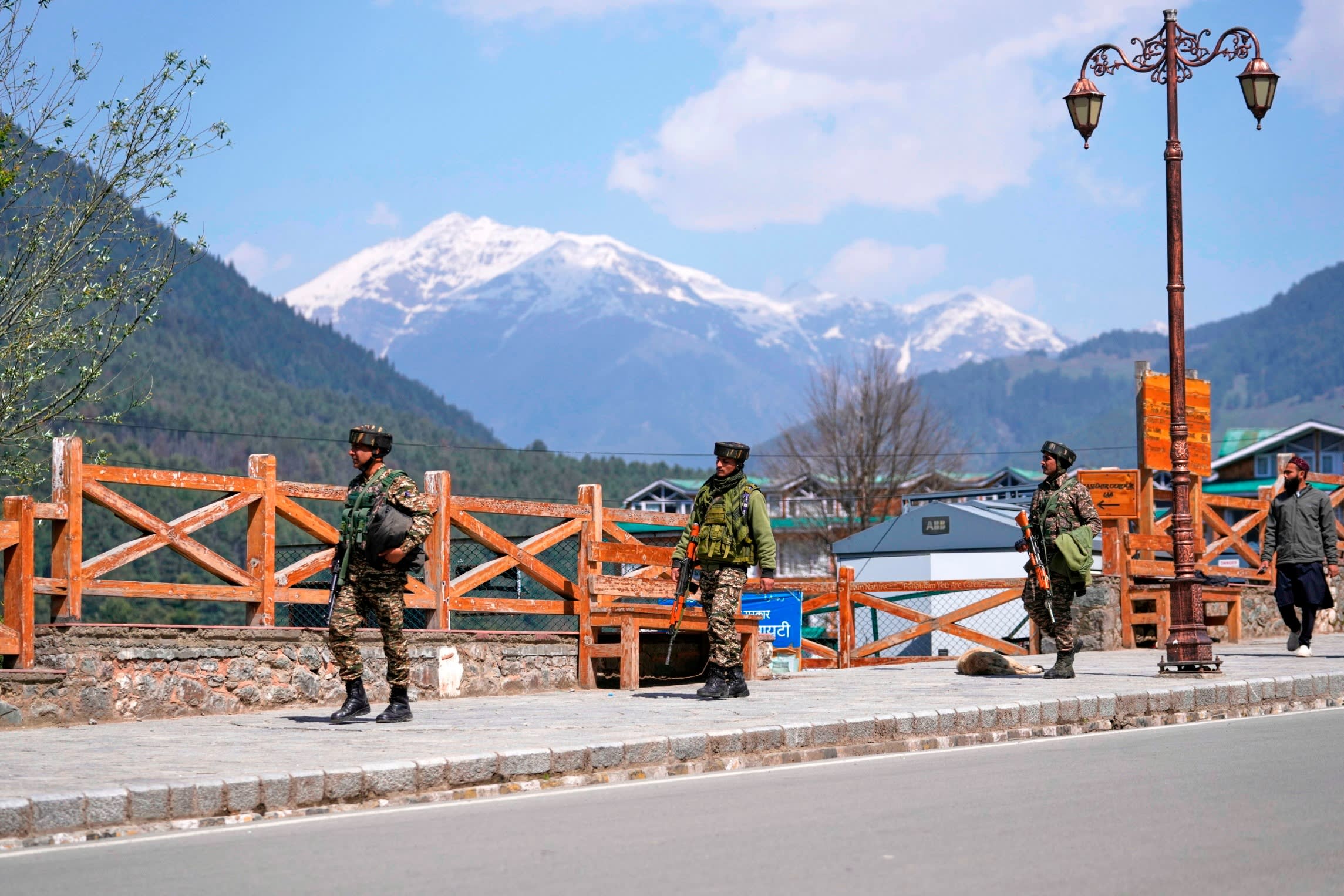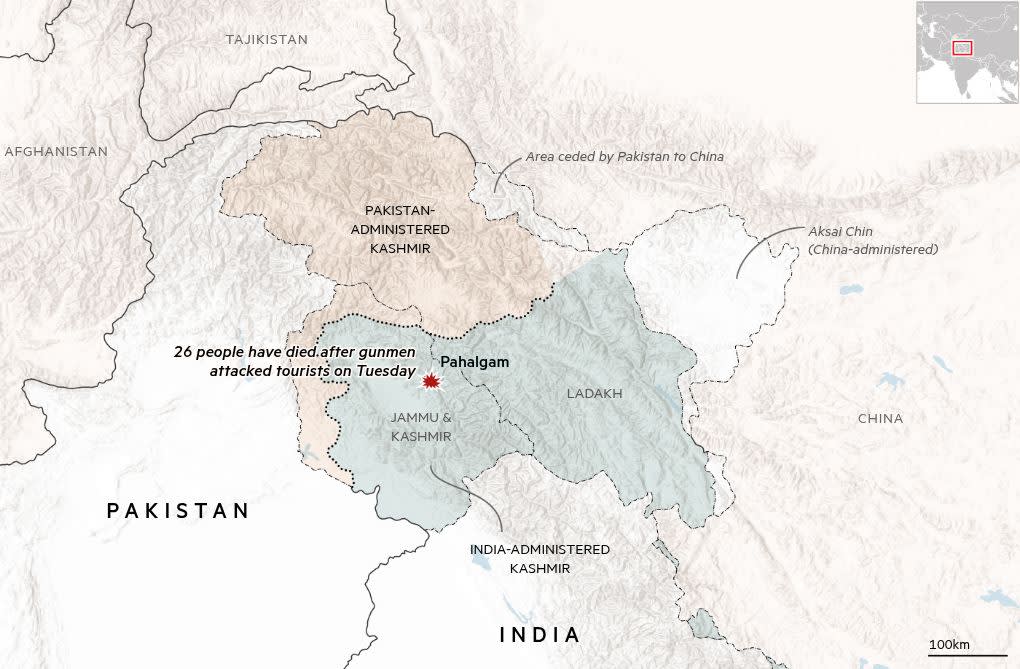A deadly attack on civilians in Indian-controlled Kashmir has threatened to reignite one of Asia’s longest-running conflicts after New Delhi linked the violence to Pakistan, feeding fears of a renewed confrontation between the nuclear-armed neighbours.
Twenty-six people were killed and 17 wounded on Tuesday when suspected militants opened fire in Pahalgam, a scenic tourism destination in the mountainous northern region.
The disputed Kashmir valley has been plagued by deadly violence for decades, though relative calm in recent years has brought tourism and economic development.
The attack has sparked an outpouring of nationalist fervour, with Prime Minister Narendra Modi warning that those behind the “heinous act” would “not be spared”.
Observers fear an escalation could renew the region’s decades-long legacy of militant violence, or even spark direct hostilities between India and Pakistan, as following incidents in 2016 and 2019. Both countries claim Kashmir and each controls parts of the region.

Who was behind the latest attack?
Two days after the attack, New Delhi has not said who it believes was responsible. However, a new militant group that identifies itself as The Resistance Force (TRF) claimed responsibility for the assault in a statement shared on social media channels on Tuesday.
The group has been active in the Kashmir valley over the past four years, where they have claimed credit for ambushing Indian troops. The group has recorded their attacks with body cameras and uploaded the videos to social media, as part of their objective of attacking Indian “occupation” forces.
Kashmir has a history of militant activity, including by Lashkar-e-Taiba, a Pakistan-based militant group that seeks to reunify the region and was responsible for the 2008 attacks in Mumbai that killed 175 people.
The group has been banned as a terrorist group by India, the US, UK and EU for its ties to al-Qaeda.
What is the political situation in Kashmir?
India and Pakistan first went to war over control of Kashmir in 1948, less than a year after the partition that created both independent countries. The boundary between their troops became a de facto border, known as the Line of Control.
During the hostilities, the UN Security Council called for a plebiscite for Kashmir residents to decide whether they wanted to join India or Pakistan, but this was never held.
The Indian controlled half of the region, known as Jammu and Kashmir, became the country’s only Muslim-majority state, a designation under which it enjoyed partial autonomy, including its own constitution and flag. Jammu refers to the Hindu-majority subregion.
In the late 1980s, a separatist movement in Kashmir, backed by Pakistan, turned violent and the militancy peaked in the 1990s with a surge in bombings, kidnappings and attacks on military personnel and civilians.
Indian forces responded with heavy-handed repression, and human rights groups have accused New Delhi of forced disappearances and other abuses.
What has changed under Modi?
Following his re-election in 2019, Modi stripped Jammu and Kashmir of its special autonomous status. The move dissolved the legislature and downgraded the region from a state to a federally controlled territory, bringing it under New Delhi’s direct rule.
Modi, whose domestic popularity rests in part on a hardline national security stance, promised the changes would bring peace to a region scarred by decades of bloodshed.
It also carved out Ladakh — a largely Buddhist mountainous plateau that is claimed and partly controlled by China — as a separate territory.
The Jammu and Kashmir move was accompanied by a security crackdown, with authorities imprisoning thousands of people, including local political leaders. It also worsened India-Pakistan relations, leading the countries to downgrade diplomatic and economic ties and sever direct flights.
But Modi’s crackdown also brought a lull in the worst of the violence. Kashmir, which is often compared to Switzerland for its rolling green slopes surrounded by snow-peaked mountains, began to draw domestic tourists, with visitor numbers growing to 23.6mn last year from 16.2mn in 2019.
The prime minister touted the rising tourism numbers as vindication of his policies, which he said had brought prosperity to the valley.
What will happen next?
Tourists began fleeing the region on Tuesday, with Indian authorities and airlines organising extra flights. While there have been several militant attacks in the region since 2019, incidents targeting civilians have been rare.
India Business Briefing
The Indian professional’s must-read on business and policy in the world’s fastest-growing big economy. Sign up for the newsletter here
India’s defence minister Rajnath Singh vowed a swift response against the perpetrators as well as those who “conspired behind the scenes”. He did not mention Pakistan, but Indian political figures called for Modi’s government to retaliate.
Pakistan’s foreign ministry said it was “concerned” by the tourists’ deaths.
India also downgraded diplomatic relations with Pakistan on Wednesday, suspended its participation in a cross-border water treaty and said it would expel Pakistani military advisers and draw down its own personnel.
Analysts warned that New Delhi could even take military action. In 2019, after an attack on a paramilitary convoy in Jammu and Kashmir that killed 40, Indian warplanes conducted bombing raids across the border. Indian forces also conducted cross-border raids in 2016 after a gunman killed 19 troops at an army base at Uri in Kashmir.
“The suspension of the water treaty is unprecedented in its severity,” said Ajai Sahni, a counterterrorism export and executive director of the Institute for Conflict Management in New Delhi. “It will certainly be followed by other measures, but they will be keeping any plans close to their chest.”



